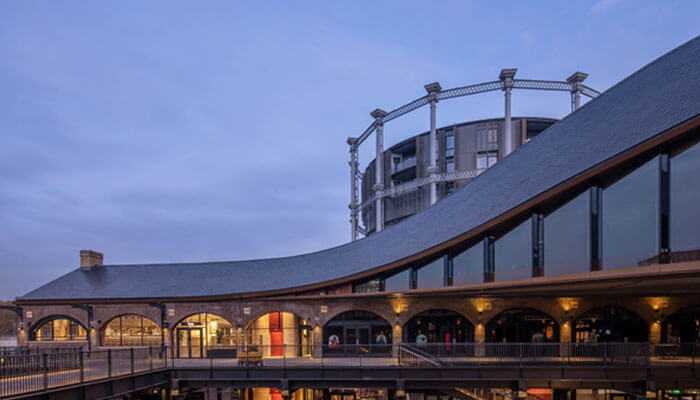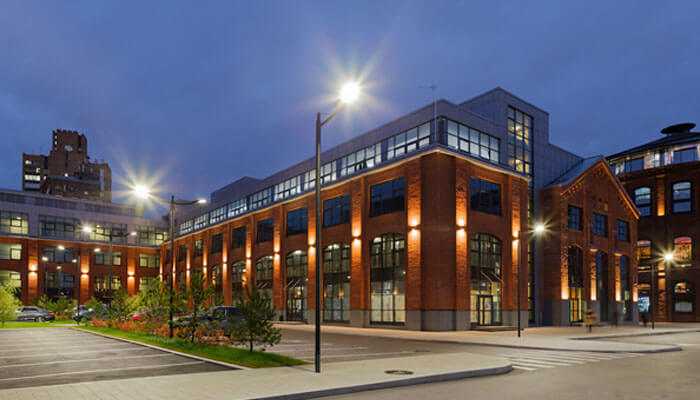Adaptive reuse in construction represents a transformative approach to revitalizing existing structures, offering a blend of preservation and innovation. This comprehensive article delves into the concept of adaptive reuse architecture, highlighting its significance, advantages, and the process involved in repurposing buildings for new uses.
What is Adaptive Reuse Architecture?
Adaptive reuse architecture involves repurposing old buildings for new uses while retaining their essential form and character. This approach transcends traditional renovation or restoration by imaginatively adapting the structure for a purpose markedly different from its original design. For instance, a historic church might be converted into a unique restaurant, where the original stained glass and vaulted ceilings provide a stunning and atmospheric dining experience. These transformations are not just about changing the use of the space, but also about preserving and celebrating the building’s historical and architectural essence, making each project unique and deeply rooted in its community.
Why is Adaptive Reuse Important?

1. Maintains Cultural Heritage
One of the most compelling reasons for adaptive reuse is the preservation of cultural heritage. Old buildings often embody a city’s history and architectural legacy. By repurposing them, we maintain a tangible connection to the past, which can otherwise be lost in the wake of new construction. For example, converting a century-old factory into a contemporary art gallery not only saves the structure but also celebrates its historical significance, allowing new generations to experience a piece of the city’s industrial past.
2. Slows Urban Sprawl
Adaptive reuse also combats urban sprawl. Revitalizing existing structures within urban centres, curbs the need for outward expansion. This approach helps maintain the density of cities, preserving green spaces, and reducing the environmental impact associated with new construction on undeveloped land. For instance, redeveloping an abandoned urban hospital into a mixed-use complex prevents the development of new land on the city’s outskirts, thereby preserving valuable rural landscapes and habitats.
3. Creates a New Community Beacon
Revitalized buildings often become beacons in their communities, fostering a sense of pride and place. A well-executed adaptive reuse project can breathe new life into a neighborhood, attracting businesses, residents, and visitors, thus contributing to the economic and social vibrancy of the area. An old warehouse turned into a community center, for example, not only provides a much-needed space for local activities but also becomes a symbol of community resilience and innovation, encouraging further development and community engagement.
How Adaptive Reuse Works

Examine the Building
The first step in adaptive reuse is a thorough assessment of the existing building. This involves evaluating the structural integrity, understanding the architectural style, and identifying features worth preserving. It’s essential to determine if the building is capable of supporting a new function. In this stage, services like S&A Container Service can be instrumental in facilitating waste management and material sorting, especially when dealing with older buildings that may require significant debris removal and careful handling of historical materials.
Survey the Neighbourhood
Understanding the context is crucial. Surveying the neighborhood helps in understanding the local culture, the needs of the community, and how the building can best serve its new purpose. This step ensures that the adaptive reuse contributes positively to its surroundings. For example, converting an old warehouse in a residential area into a community recreational facility would require understanding the local demographic’s needs, like play areas for children or fitness centers for adults.
Determine the Budget
Budgeting in adaptive reuse can be complex. It involves estimating costs for restoration, renovation, and compliance with modern building standards. A well-planned budget is essential to balance the preservation of historical elements with the requirements of the new use. This includes allocating funds for potential structural reinforcements, modern amenities, and energy-efficient upgrades, all while keeping the project financially viable.
Hire the Right Team
Adaptive reuse projects require a multidisciplinary team. This team typically includes architects, engineers, conservation specialists, and construction professionals who understand the intricacies of working with existing structures and appreciate the value of historic preservation. The team’s expertise is vital in ensuring that the building’s historical value is respected while it’s adapted to meet modern needs and safety standards.
Create Plans
Creating plans for adaptive reuse is a balancing act between the old and the new. It involves designing spaces that respect the building’s historical significance while making it suitable for contemporary use. This phase often requires creative solutions to meet modern standards without compromising historical integrity. The challenge lies in integrating modern functionality seamlessly with the old structure, like incorporating new technology in a way that doesn’t detract from the building’s historic charm.
Begin Construction
The final phase is construction. This stage must be handled with care, as working with old buildings can present unexpected challenges. A focus on quality and attention to detail is paramount to ensuring the building’s longevity and functionality in its new role. During construction, unforeseen issues like hidden structural damage or outdated materials may arise, requiring agile problem-solving and a flexible approach to preserve the building’s integrity while ensuring its new purpose is fully realized.
Advantages of Adaptive Reuse

Reduces Construction Costs
One practical advantage of adaptive reuse is the potential for lower construction costs. Repurposing an existing structure can be more cost-effective than building from scratch, as significant elements like foundations and external walls are already in place.
Accelerates Construction
Projects that adapt existing structures often have shorter timelines compared to new constructions. Since the basic structure is already in place, the focus is on interior modifications and exterior refurbishments, which can be completed more quickly.
Popular with the Community
Adaptive reuse projects tend to be popular with local communities. They demonstrate respect for local history and character, often leading to public support and enthusiasm, which can be crucial for the success of any construction project.
Conclusion
Adaptive reuse in construction is not just about preserving buildings; it’s about reimagining the future while respecting the past. It offers a sustainable approach to urban development, blending history with modernity, and fostering community pride. By understanding and embracing the principles of adaptive reuse, we can create spaces that are not only functional and cost-effective but also rich in history and character. This approach stands as a testament to the idea that the best way to honor our architectural heritage is to bring it into the present, alive, and in use.
In a world increasingly aware of the importance of sustainability and cultural preservation, adaptive reuse emerges not just as an option, but as a necessity. Its benefits extend beyond the physical structures it revitalizes; they ripple through communities, economies, and the very fabric of urban life. With thoughtful implementation, adaptive reuse can continue to transform our built environment in a way that respects our past while building a sustainable, vibrant future.
Source: Cosmo Politian











